As Trump and Putin Hold Two-Hour Call with No Ceasefire Agreement, Zelensky Rejects Russian Territorial Demands, While European Allies Prepare Sanctions and Ukraine Continues Strikes on Russian Infrastructure
Summary of the Day – May 19, 2025
The diplomatic arena witnessed intense activity with little tangible progress as US President Donald Trump and Russian President Vladimir Putin held a two-hour phone call that resulted in no ceasefire agreement. Instead of accepting the 30-day pause in fighting that Ukraine and its allies have demanded, Putin offered only a vague “memorandum” on a potential future peace treaty while maintaining Russia’s maximalist demands. President Volodymyr Zelensky firmly rejected Russian ultimatums to withdraw from occupied territories, declaring “No one will surrender their lands.” Meanwhile, European nations prepared coordinated sanctions and finalized a €150 billion defense fund, while Finland and Australia continued military aid to Ukraine. On the battlefield, Russian forces advanced near Chasiv Yar, Toretsk, and Novopavlivka, as Ukrainian drones struck a Russian oil pumping station in Krasnodar Krai and radar installations on captured Black Sea gas platforms.
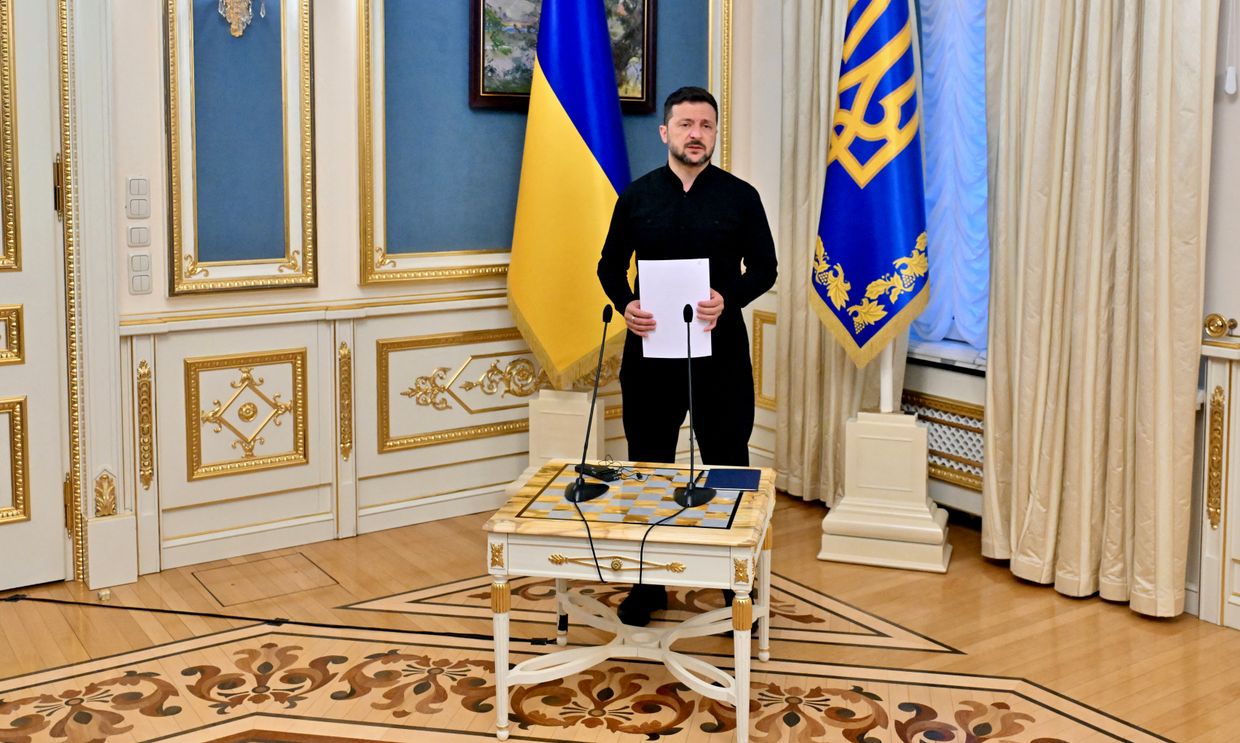
President Volodymyr Zelensky speaks to the media during a press briefing in Kyiv, after his phone call with U.S. President Donald Trump. (Sergei SUPINSKY / AFP)
Promises Without Substance: Trump-Putin Call Yields No Ceasefire
US President Donald Trump and Russian President Vladimir Putin held a phone call on May 19 to discuss ceasefire and peace negotiations regarding Russia’s war in Ukraine. Putin’s foreign policy aide Yuri Ushakov later revealed the call lasted two hours and five minutes, though it produced no breakthrough on the critical issue of an unconditional ceasefire.
Following the call, Trump stated on Truth Social that Russia and Ukraine would “immediately begin bilateral negotiations about both a ceasefire and a peace agreement.” He also expressed that there is “a tremendous opportunity for Russia to create massive amounts of jobs and wealth” through post-war trade relations with the United States.
Putin offered a markedly different characterization, telling reporters he agreed to propose a “memorandum regarding a potential future peace treaty” that might include “a possible ceasefire for a certain period of time if the relevant agreements are reached.” The Russian president emphasized that Russia’s position remains unchanged, requiring “the elimination of the war’s root causes”—a longstanding Kremlin narrative calling for the replacement of the current Ukrainian government with a Russian proxy government and Ukraine’s commitment to neutrality.
Despite Russia’s continued refusal to accept a ceasefire, Trump told reporters he will not impose further sanctions against Russia “because there’s a chance” of progress. When asked by journalists if he believes Putin wants peace and whether he trusts the Russian leader, Trump responded affirmatively to both questions: “I do.”
Zelensky Draws the Line: “No Ultimatums, No Surrender”
Ukrainian President Volodymyr Zelensky firmly rejected Russian demands to withdraw Ukrainian troops from the four partially occupied regions that Moscow illegally claims as its own—Donetsk, Luhansk, Zaporizhzhia, and Kherson oblasts.
“It’s our land, we won’t withdraw our troops from our territory,” Zelensky stated at a press briefing. “This is a constitutional duty of mine, of our military…. No ultimatums, no one will surrender their lands, their people, their homes.”
The Ukrainian president revealed he spoke with Trump twice on May 19—once before Trump’s scheduled call with Putin and again afterward. The second conversation lasted over an hour and included Italian Prime Minister Giorgia Meloni, French President Emmanuel Macron, Finnish President Alexander Stubb, German Chancellor Friedrich Merz, European Commission President Ursula von der Leyen, and European Council President Antonio Costa.
Zelensky also disclosed that Ukraine is exploring possible venues for high-level peace talks involving delegations from Ukraine, Russia, the United States, and European Union representatives. “Such a meeting could take place in Turkey, the Vatican, or Switzerland,” he said.
The Road to Riyadh: Technical Teams to Discuss Implementation
U.S. National Security Advisor Mike Waltz announced that talks between Russian and American delegations will take place “in the coming days” in Riyadh, Saudi Arabia after discussions with Yuri Ushakov, a close adviser to Putin.
“We agreed our technical teams would meet in Riyadh to focus on implementing and expanding the partial ceasefire President Trump secured from Russia,” Waltz wrote on X.
Steve Witkoff, Trump’s special envoy to the Middle East, expressed optimism that a full ceasefire could be reached “in a couple of weeks.” The Riyadh talks, led by Waltz and Secretary of State Marco Rubio, will build on previous U.S.-Russia meetings in the Saudi capital.
Zelensky outlined Ukraine’s participation: “From our side, there will definitely be military officials, engineers, and people who understand port infrastructure,” noting the focus would be on infrastructure, energy, and the security of shipping routes.
Ukrainian Drone Strike Halts Operations at Russian Oil Station
Ukrainian drones attacked the Kavkazskaya oil pumping station in Russia’s Krasnodar Krai overnight on May 19, according to Russian authorities. The strike reportedly damaged a pipeline connecting storage tanks, igniting a fire that covered approximately 20 square meters. Thirty on-duty personnel were evacuated, and the facility suspended operations, though no casualties were reported.
The Kavkazskaya oil transshipment point is a critical component in Russia’s energy export infrastructure, connecting a railroad oil terminal and the Kropotkinskaya oil pumping station. It forms part of the Caspian Pipeline Consortium system, which pumps up to 6 million metric tons of oil annually.
The strike follows Ukraine’s February 17 drone attack on the Kropotkinskaya oil pumping station, also in Krasnodar Krai, where seven drones reportedly hit key infrastructure.
Putin’s Confidence: Russian Leader Expects Territorial Conquest
Russian President Vladimir Putin is heading into his call with US President Donald Trump believing that Russian forces will fully capture the four Ukrainian regions he claims as Russian territory — Donetsk, Luhansk, Zaporizhia, and Kherson — by the end of 2025, according to a Bloomberg report citing a source familiar with Putin’s thinking.
“Putin is confident that his forces can break through Ukraine’s defenses by the end of the year to take full control of four regions that he has claimed for Russia,” the source said, requesting anonymity to discuss private conversations. This confidence signals he is unlikely to make concessions when speaking to Trump, raising alarm in European capitals, where leaders fear Trump could try to push through a rushed settlement.
Despite international talk of a ceasefire, Putin continues to signal readiness for a long war. “Trump wants Putin to agree to a truce, but he absolutely doesn’t want to,” said Kremlin-linked political analyst Sergei Markov. “But Putin isn’t interested in a collapse of the talks. He’s trying to maneuver so that these negotiations continue alongside the military offensive.”
European officials say that after more than three years of heavy losses, Russia lacks the capability to achieve Putin’s objectives. “The probability of Russia achieving its objectives of conquering those four regions by the end of this year is very low,” said Ben Barry, senior fellow for land warfare at the International Institute for Strategic Studies.
Europe’s €150 Billion Defense Fund: Continent Rearms
In a significant development for European security, EU countries have agreed in principle to launch a common defense fund of 150 billion euros ($170 billion). The new mechanism, proposed by the European Commission in March as part of the ReArm Europe program, will allow member states to borrow money from the EU to purchase weapons and military equipment. A formal approval is expected next week.
The United Kingdom and the EU also concluded a new security pact on May 19, covering areas from maritime security to cyber threats, as London and Brussels seek to reset post-Brexit relations amid growing concerns about Russian aggression.
German government spokesperson Stefan Cornelius confirmed that newly proposed European Union sanctions are being coordinated with the US government. The sanctions would involve measures targeting the Nord Stream gas pipelines and reducing the current $60-per-barrel cap on Russian seaborne oil exports.
“Chancellor Friedrich Merz is working with US and European partners on new sanctions against Russia,” Cornelius said. “The intention of these sanctions is to achieve agreement from Russia to an unconditional truce.”
EU Targets Russian Oil: Price Cap Reduction Proposed
The European Union will propose this week that Group of Seven (G7) finance ministers reduce the current $60-per-barrel cap on Russian seaborne oil exports, European Economic Commissioner Valdis Dombrovskis said on May 19. EU officials told Reuters that a $50 per barrel proposal would be made at the upcoming meeting.
Brussels and its allies seek to further reduce the Kremlin’s revenue from fossil fuel exports, a key funding source for its war against Ukraine. Dombrovskis confirmed the EU will formally raise the issue during this week’s G7 finance ministers’ meeting in Canada.
“This is something which we flagged from the Commission’s side in the context of the 18th sanctions package,” Dombrovskis said. “I would expect some interest also from other G7 partners in this regard and some discussion.”
The G7 oil price cap, established in December 2022, prevents Western companies from shipping, insuring, or providing related services for Russian crude sold above $60 per barrel. Western leaders are concerned that the existing cap has lost effectiveness as Russia reroutes exports through a “shadow fleet” of tankers operating outside regular maritime oversight.
Prisoner Exchange: 1,000-for-1,000 Swap in Preparation
In a rare moment of cooperation amid the diplomatic standoff, President Zelensky revealed that Ukrainian Defense Minister Rustem Umerov and Russian President Vladimir Putin’s adviser, Vladimir Medinsky, held a call on May 19 to discuss a significant prisoner exchange between the two countries.
The exchange will involve 1,000 Ukrainian prisoners of war for 1,000 Russian prisoners, marking one of the largest such swaps since the beginning of the full-scale invasion. According to Zelensky, the exchange will happen “in the next days or weeks,” though civilians will not be included in the list.
This agreement was one of the few concrete outcomes from the recent negotiations in Istanbul, which concluded without a breakthrough on ceasefire talks. Ukraine’s Security Service has reportedly already begun preparations for the massive prisoner swap.
Military Aid Continues: Finland and Australia Provide Hardware
Finland announced it will supply heavy ammunition to Ukraine using proceeds from frozen Russian assets. The country has reached an agreement with the European Commission to implement the measure through the European Peace Facility, with Finland providing 90 million euros (approximately $100 million) worth of heavy ammunition procured from domestic suppliers.
“We were able to negotiate additional funding for Finland’s support for Ukraine. The funds come from frozen Russian assets,” said Finnish Defense Minister Antti Hakkanen. “The products are purchased from Finnish industry to boost employment at home and sent to Ukraine to help its defense.”
Meanwhile, Australian authorities have begun loading the first of 49 decommissioned Abrams tanks onto a cargo ship bound for Ukraine, despite continued private objections from US officials. Australian Prime Minister Anthony Albanese confirmed the upcoming delivery when meeting with President Zelensky in Rome on May 18, though the exact arrival date is being withheld for security reasons.
SBU Strikes Black Sea: Drones Destroy Russian Radar System
The Security Service of Ukraine (SBU) has destroyed a Russian radar system and warehouse facilities located on gas production platforms in the Black Sea using a coordinated drone strike, the agency reported on May 19.
According to the SBU, the operation involved a combination of aerial and naval drones targeting Russian military infrastructure placed on Ukrainian offshore drilling rigs. An aerial drone first struck one of the platforms, followed by a naval drone that delivered a secondary hit. The attack destroyed a Russian “Neva” radar system used for monitoring aerial and surface activity, as well as supply storage and living quarters on the platform.
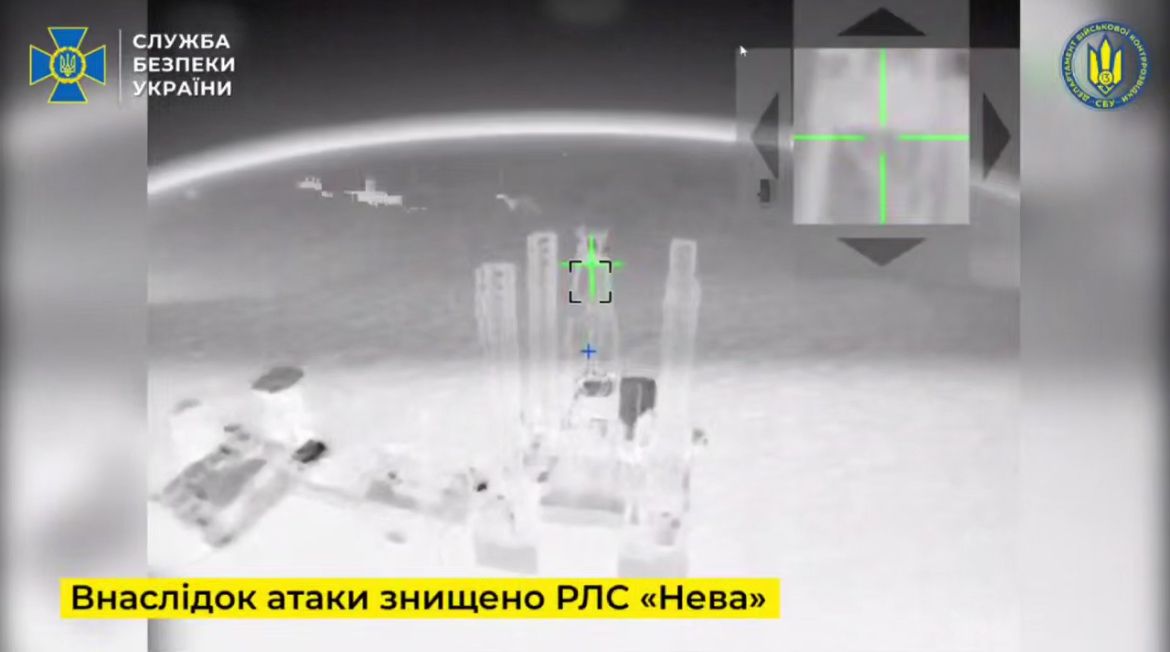
Screenshot from SBU drone footage showing the moment of a strike on a Russian-occupied offshore gas platform in the Black Sea. (SBU / Telegram)
“In a single special operation, our specialists used two types of drones that proved highly effective when working in tandem,” the agency stated. The SBU noted that the attack is part of an ongoing effort to clear the Black Sea of Russian military presence and equipment.
Leadership Changes: 59th Brigade Commander Replaced
Lieutenant Colonel Bohdan Shevchuk was dismissed as the commander of Ukraine’s 59th Brigade of the Unmanned Systems Forces and replaced by Colonel Oleksandr Sak, according to Ukrainian media reports citing sources within the brigade.
The 59th Brigade, deployed in the Pokrovsk sector in Donetsk Oblast, underwent the emergency leadership change between May 15 and 16 on the order of Commander-in-Chief Oleksandr Syrskyi. The brigade’s new commander, Sak, previously led the 53rd Mechanized Brigade fighting in the Kreminna area.
The reasons behind the move have not been officially disclosed, though sources suggested it could be linked to the worsening situation in the Pokrovsk sector, which has been the epicenter of some of the heaviest battles in Donetsk Oblast as Russian forces attempt to capture the strategically important mining town.
National Security Agencies Suspend Cooperation with U.S.
Some U.S. national security agencies have suspended cooperation with international partners in countering Russian sabotage and cyber operations, Reuters reported, citing undisclosed official sources. Under former President Biden, the National Security Council coordinated the effort of at least seven security agencies working with European partners to disrupt Russia’s escalating hybrid activities across Europe.
Since Trump took office on January 20, the National Security Council has reportedly ceased coordinating these efforts, and expected meetings with European partners have not taken place. The development has raised concerns in Europe that Washington might cut a peace deal unfavorable to its allies.
“Putin has been emboldened by his ability to make maximalist demands of Ukraine without experiencing any serious pushback from the Trump administration,” said Bota Iliyas, a senior analyst at London-based Prism. “Putin doesn’t trust Trump. But he will push Trump to align with Russia’s vision for a ceasefire.”
Battle for Territory: Russian Advances in Multiple Sectors
Russian forces continued offensive operations across multiple sectors of the front, with confirmed advances in several areas while Ukrainian forces held their ground in others.
In the Chasiv Yar direction, geolocated footage published on May 17 indicates that Russian forces recently advanced in southern Chasiv Yar and southeast of Ozaryanivka. Russian forces continued offensive operations near Chasiv Yar itself, northwest of Chasiv Yar toward Mayske, southeast of Chasiv Yar near Ozaryanivka and Kurdyumivka, and south of Chasiv Yar near Bila Hora and toward Stupochky.
In the Toretsk direction, geolocated footage published on May 19 indicates that Russian forces recently advanced northwest of Toretsk. Ukrainian forces, meanwhile, advanced along the railway southeast of Dyliivka according to footage published on May 18. Russian forces attacked near Toretsk itself; northeast of Toretsk near Dyliivka and Druzhba; southwest of Toretsk near Nova Poltavka and Stara Mykolaivka.
In the Novopavlivka direction, geolocated footage published on May 19 indicates that Russian forces recently advanced north of Kotlyarivka. Russian forces conducted offensive operations northeast of Novopavlivka near Novooleksandrivka and toward Muravka; east of Novopavlivka near Kotlyarivka; and southeast of Novopavlivka near Troitske and Horikhove.
In Kursk Oblast, Ukrainian forces advanced in the southern outskirts of Tetkino, while Russian forces advanced to the international border checkpoint southeast of Tetkino, according to geolocated footage published on May 19.
Romania Rejects Far-Right: Pro-EU Candidate Wins Election
Bucharest Mayor Nicusor Dan won Romania’s presidential election on May 19, defeating far-right challenger George Simion with 53.6% of the vote in a closely watched runoff. The election outcome was welcomed by both Ukraine and Moldova, as Dan has pledged to maintain Romania’s pro-Western path and continue support for Ukraine.
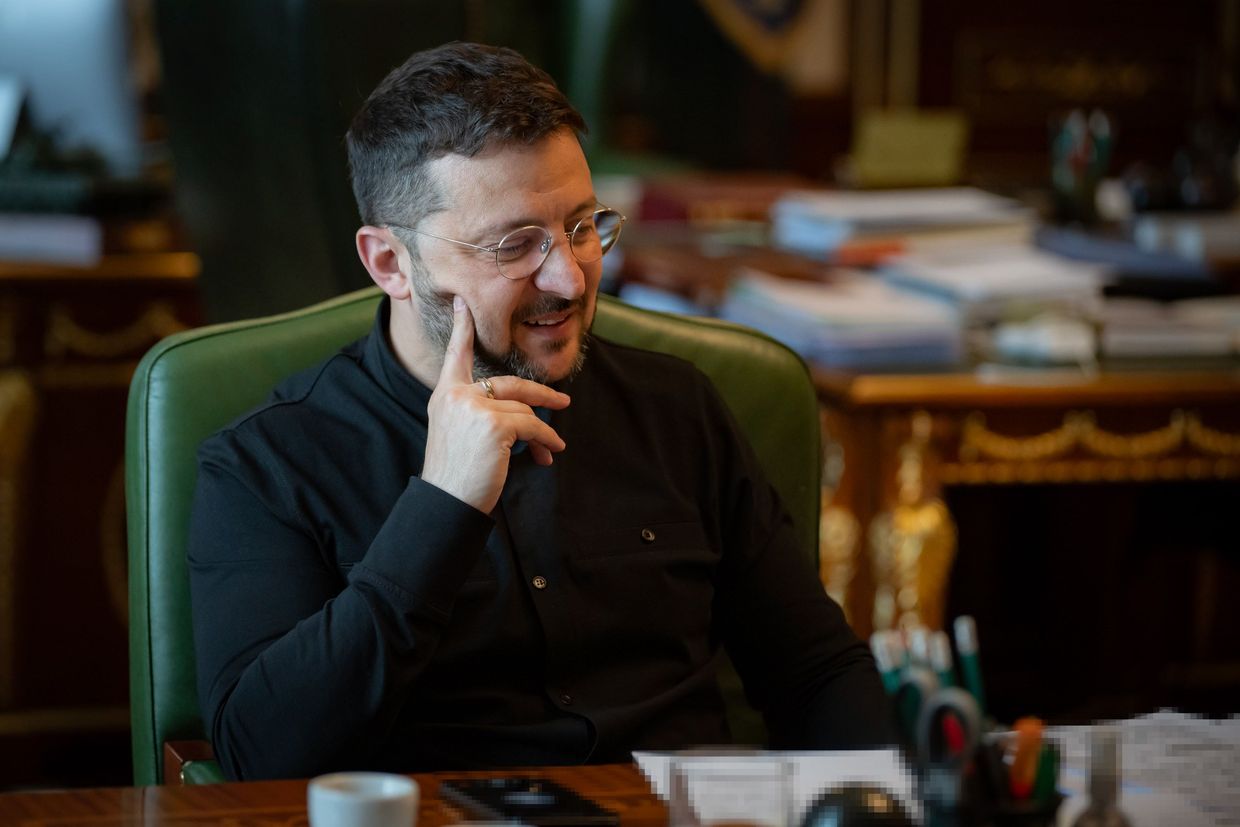
President Volodymyr Zelensky during a phone-call with Romanian President-elect Nicusor Dan. (President Volodymyr Zelensky/X
President Zelensky called Dan to congratulate him on his victory. “We respect Romania and the choice of the Romanian people. This is a country on which much depends when it comes to security issues,” Zelensky said. “We are deeply grateful for Romania’s contribution to protecting the lives of our people. It is important that support for Ukraine continues.”
The victory of the pro-EU centrist is seen as a positive signal for Ukraine, as Romania has been a key ally during Russia’s full-scale invasion, providing a Patriot air defense missile system and facilitating the transit of Ukrainian grain amid Russian threats to Black Sea shipping.
Dan’s far-right opponent, George Simion, had pledged to oppose further aid for Ukraine if elected and said he would demand repayment for the assistance already provided. Simion has been banned from entering Ukraine over his “systematic anti-Ukrainian activities.”
Polish Presidential Race: Trzaskowski Leads First Round
Warsaw Mayor Rafal Trzaskowski narrowly led Poland’s presidential election on May 18, but failed to secure an outright victory. He will face conservative Karol Nawrocki in a runoff on June 1.
Trzaskowski, a senior figure in Prime Minister Donald Tusk’s Civic Platform (PO) party, won 31.4% of the vote according to final results. Nawrocki, a historian backed by the conservative Law and Justice (PiS) party, came in second with 29.5%. Far-right candidates Slawomir Mentzen and Grzegorz Braun secured 14.8% and 6.3% respectively, making their supporters potentially decisive in the second round.
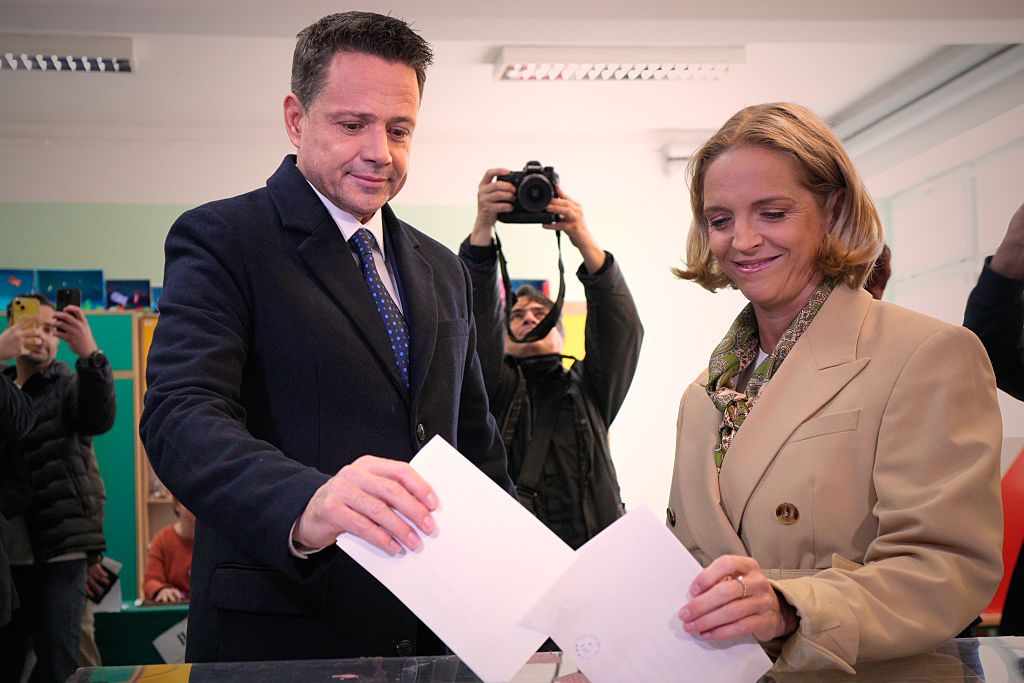
Centrist candidate Rafal Trzaskowski casts his vote with his wife in the Ursynow district in Warsaw, Poland, during the country’s presidential election. On Sunday the polls showed a very minor, almost insignificant lead for Trzaskowski over his conservative rival Karol Nawrocki. (Jaap Arriens / NurPhoto via Getty Images)
Nawrocki, addressing his supporters in Gdansk, warned that Tusk must be stopped from gaining “total power in Poland.” He urged voters who backed far-right candidates to rally behind him in the second round to “save Poland” from Tusk’s influence.
While Poland’s presidency is largely ceremonial, the role carries veto power. With Tusk’s coalition lacking the parliamentary majority to override a presidential veto, the outcome of the runoff will determine whether the government can move forward with key reforms.
Russia’s Internal Repression: Amnesty International Banned
Russia’s Prosecutor General’s Office has designated Amnesty International as an “undesirable organization,” effectively banning the global human rights group from operating in the country. Russia accused the London-based organization of being a hub for “global Russophobic projects funded by supporters of the Kyiv regime” and claimed that the group’s activities “aim to intensify the military confrontation in the region.”
The designation under Russia’s controversial “undesirable organizations” law prohibits groups from operating within Russia and makes it a criminal offense for individuals to participate in their activities.
In a separate development, Russian authorities have detained nine residents of Stavropol Krai, including eight minors, accusing them of plotting an attack on police officers during May 9 Victory Day celebrations on behalf of a “terrorist group,” the Federal Security Service (FSB) said. According to the FSB, a teenager from the Andropovsky district was accused of joining an unspecified “international terrorist organization” via Telegram and recruiting eight other people, including seven teenagers aged between 14 and 16.
Hungary’s Democratic Crisis: 10,000 Protest Foreign Agent Law
Around 10,000 people rallied in Hungary’s capital on May 18 to protest a controversial bill that critics say would limit free expression and mimic Russia’s restrictive “foreign agent” law. The demonstration in Budapest came after a member of Prime Minister Viktor Orban’s ruling Fidesz party introduced legislation that would grant the government sweeping powers to investigate, penalize, or even ban media outlets and non-governmental organizations receiving any foreign funding.
Protesters packed Kossuth Square outside Hungary’s parliament, denouncing the bill as an attack on civil society and democratic freedoms. “This bill is nothing more than a threat, a threat against people being able to express their opinions clearly and freely,” said Jakab Toth, one of the speakers.
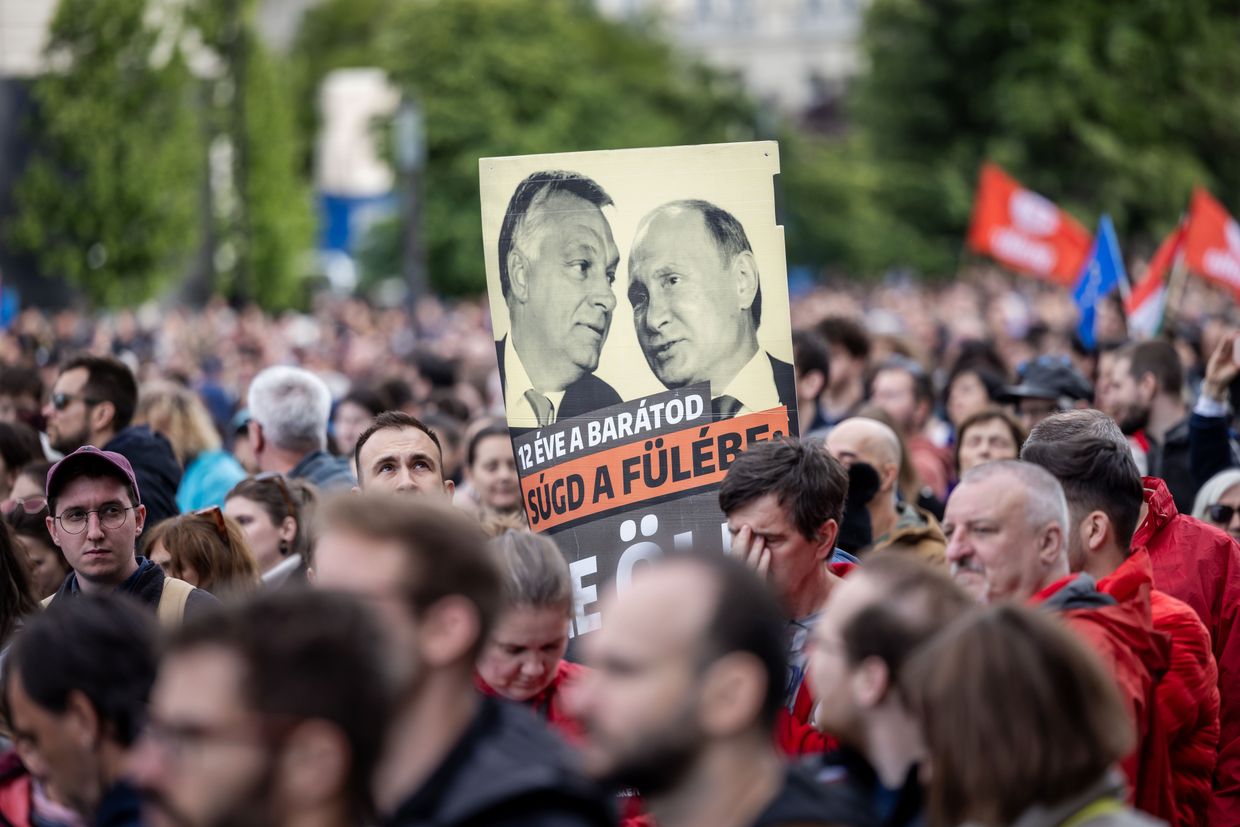
A demonstrator holds a banner that shows Hungarian Prime Minister Viktor Orban and Russian President Vladimir Putin during a protest against the ‘Transparency Bill’, in Budapest, Hungary. (Janos Kummer/Getty Images)
The proposed law would create a government blacklist of organizations receiving international support and allow intrusive surveillance, large fines, and operational bans. It would be enforced by the Sovereignty Protection Office, a state body established in 2023 that critics say targets independent voices under the guise of national security.
Looking Ahead: Diplomatic Words vs. Battlefield Reality
As a week of potentially decisive diplomatic activity unfolds, the chasm between rhetoric and reality grows increasingly apparent. The much-anticipated phone call between Trump and Putin produced more promises than concrete action, with the Russian leader again evading commitment to the unconditional ceasefire that Ukraine and its Western allies have been demanding for months. Instead, Putin’s offer of a vague “memorandum” with no timeline maintains Russia’s strategy of prolonging negotiations while continuing its military offensive.
European leaders now face a critical choice: whether to proceed with threatened sanctions despite Trump’s reluctance, potentially creating daylight between Washington and Brussels, or to wait and risk further emboldening Moscow. The approaching G7 finance ministers’ meeting and EU defense initiative represent opportunities to demonstrate Western resolve at a moment when unity appears increasingly fragile.
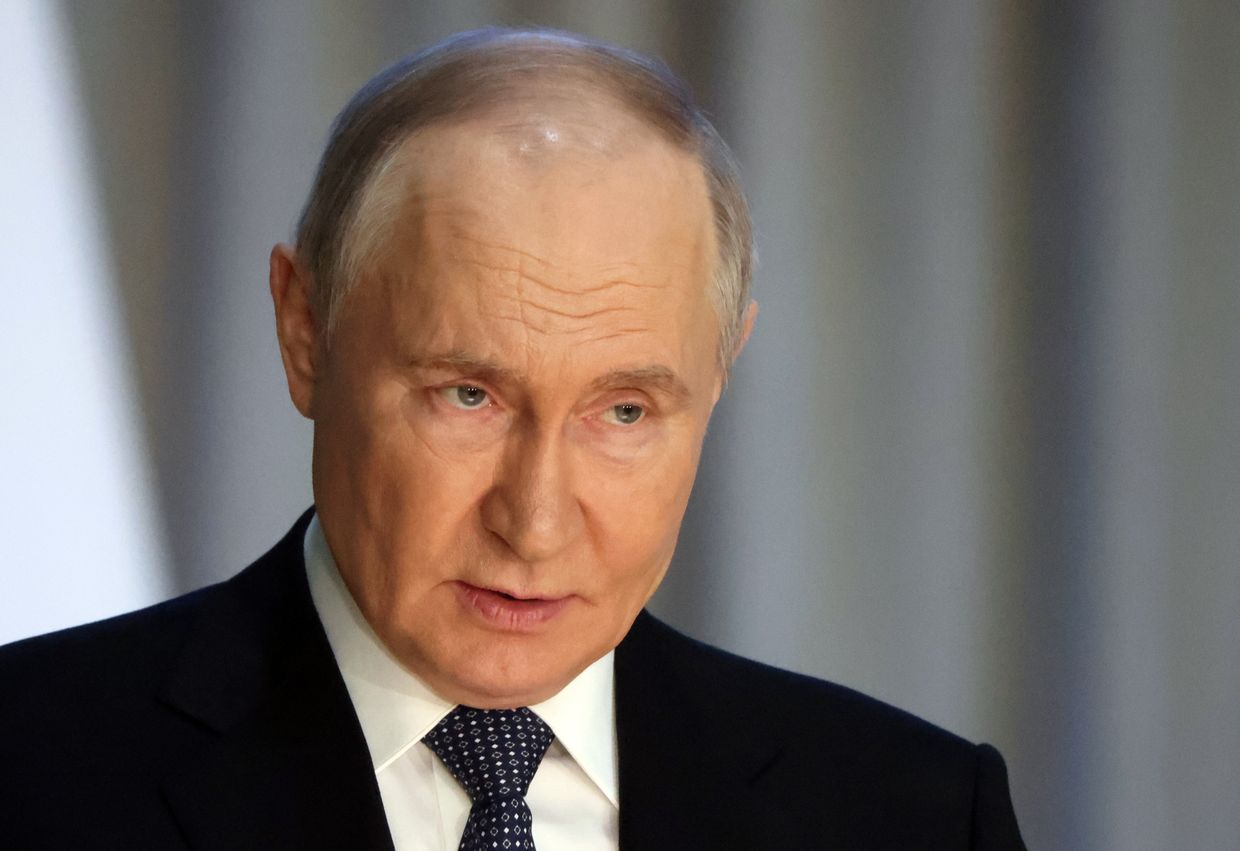
Russian President Vladimir Putin speaks at the Prosecutor-General’s Office board meeting in Moscow, Russia. (Contributor / Getty Images)
Meanwhile, as technical teams prepare to meet in Riyadh and a massive prisoner exchange takes shape, Ukrainian forces continue to face intense pressure across multiple fronts. The continued flow of Western military aid offers vital support, but Putin shows no signs of abandoning his maximalist territorial demands or accepting an unconditional ceasefire. For Ukraine, the struggle for sovereignty continues both on the battlefield and at the negotiating table, with no immediate end to the conflict in sight.
